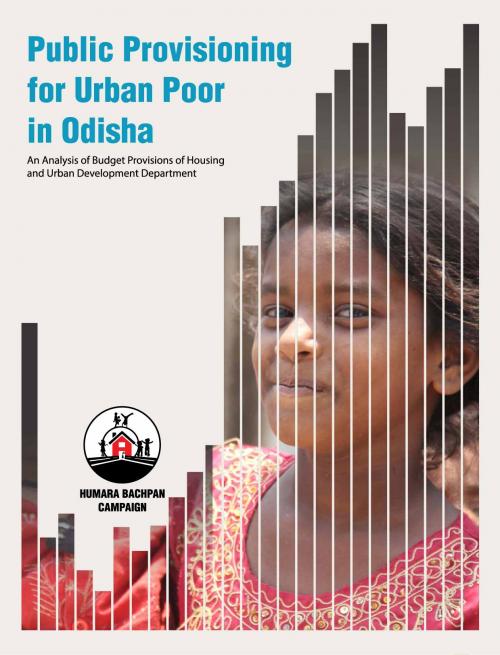
Out of the total slum population in the state 32.7% live in semi-permanent or temporary houses where they face evacuation on regular basis. 49.8% of the slum households use grass wood, thatch, metal, asbestos sheets as material for roof and 28% have mud walls. These materials are temporary and do not guard against extremities of weather. Only 38% of the houses are in ‘good’ condition according to Census figures for Odisha. It gives a picture where children are mostly neglected and in the state 10-15pecent children are living in slums.
The impact of unsafe sanitation conditions and behaviour are immense that adversely affect the urban poor, women and children. Besides poverty, lack of tenure, housing and environmental conditions in slum etc., constrains the urban poor households from gaining access to safe sanitation.
The allocation of funds in state budget though plays a major role but it also lacks in proper financial management and allocation of resources. 84 percent of department budget in average during last five years goes for establishment, maintenance and housekeeping related expenditure, while only 16 percent have been allocated for creation of new assets against rapid urbanisation in the state.
Again odisha has developed a sanitation strategy. All the goals of this strategy are to be achieved over a period of six years (2012-18). Looking at the budget allocation under this head in the department gives a gloomy picture. The allocation made for this purpose was Rs. 18.77 Cr (1.33 percent) during 2012-13 which reduced to only Rs. 50 lakh for the year 2013-14 (0.02 percent). Adding to this it is a fact that Children of around 20 per cent households in the city are still deprived of toilet facility for which they resort to open defecation.
These statistics are a sign of the intensity of urban poverty in India and in some cases exceed rural poverty. Children though have a major share in population are still neglected to the core, sayd Mr. Jyoti Prakash Brahma from Humara Bachpan Campaign, which advocates for a safe and healthy neighbourhood in Indian Slums with child friendly basic infrastructure. Taking a plea of slum life the government cannot ignore the dignity of life from a slum dweller and especially a child who is yet to know the difference, Mr. Brahma added.










Add new comment